Here’s my demo of the Chilled Berry Soup recipe from the 15th anniversary edition of “The Moosewood Cookbook.” Enjoy!
Epicuriously Yours,
Tommy

Adventures of a solo diner
Here’s my demo of the Chilled Berry Soup recipe from the 15th anniversary edition of “The Moosewood Cookbook.” Enjoy!
Epicuriously Yours,
Tommy
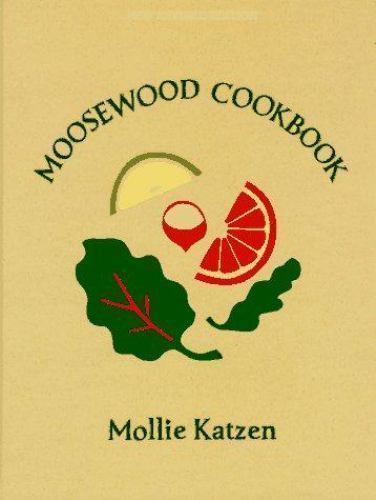
The year was 1973, and a group of friends decided to follow their passions by opening a small restaurant in Ithaca, NY. The called their new venture Moosewood. Initially, they did not set out to create a vegetarian restaurant, but after a short time they found that they had quite simply and easily become just that. Not long after, public demand made one of the founders – Mollie Katzen – consider writing down some of their most popular recipes. History had been made, although she didn’t know it at the time.
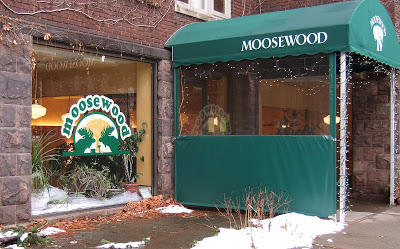
The first edition of the cookbook was self-published in 1974 with the title “The Moosewood Cookbook, Recipes from Moosewood Restaurant in the Dewitt Mall, Ithaca, New York.” This original edition was spiral bound and contained hand lettering and whimsical drawings by Mollie Katzen. The recipes were drawn from the fledgling restaurant’s favorites. After the initial local success, Katzen began to shop for a larger publisher and was eventually approached by Ten Speed Press in California. The book was given a new cover, but still retained the hand lettering and drawings that made the first edition so delightfully quirky.
This first Moosewood Cookbook went on to astounding international success and in 1992 the author published a special 15th anniversary edition – the one that I am reviewing here. This edition took the original recipes and – based on reader feedback – reduced the amount of butter and eggs used in many of them. After 40 years of wild success, the cookbook has undergone yet another iteration. The special 40th anniversary edition was published in 2017 but still with the same cover and the quirky hand lettering and drawings.
Over the years, the Moosewood Cookbook has become an iconic part of many collections, particularly for vegan and vegetarian cooks. In 2007, the James Beard Foundation added the cookbook to its “Cookbook Hall of Fame.” The restaurant recently celebrated their 45th anniversary – a remarkable achievement for any venture in the restaurant world. Mollie Katzen has written a number of other cookbooks and you can get more information on those at Amazon.
This book has been in my collection since the late 1990s. From about 1996 until 1999, I maintained a vegan lifestyle. For a while, I went back to eggs and dairy but by 2001 I was fully back into an omnivorous diet. During the vegan and vegetarian years, however, I collected a fair number of excellent books about those cooking styles so you will likely see quite a few more during this cookbook challenge.
Until I picked this book up last week, I had not cracked it open in probably 15 years. Now I ask myself, “What was wrong with me?” This is one of the best of the best when it comes to simple yet delicious vegetarian and vegan recipes. If nothing else, pick this one up for the chapter on sauces and salad dressings. It will revolutionize even the most meat-centric of kitchens.
Everything here is vegetarian and many are already vegan. One of the great things about the vegetarian recipes is that nearly all of them can easily be modified to remove dairy and eggs, making this a superb option for anyone seeking to learn more about vegan cooking.
If you’re interested in more of Mollie Katzen’s cookbooks, you can find information on Amazon. The Moosewood Collective, too, have published a fair number of additional cookbooks. You can get information about the restaurant and their cookbooks on the Moosewood website, referenced below:
Below is the link to my YouTube review of the Moosewood Cookbook. If you want a hint about which recipe I will be preparing, you can find the ‘random number generation’ moment at about 5:30 into the video.
I will be back soon with the recipe demo.
Epicuriously Yours,
Tommy
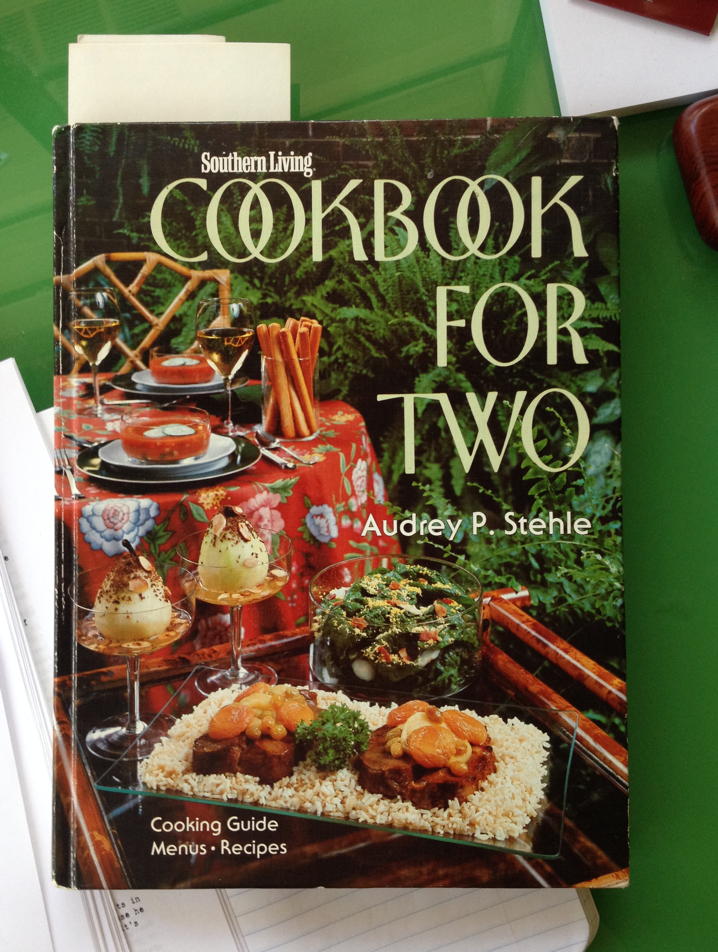
“Cooking for two can be exciting and fun, particularly when you consider its distinct advantages: you can purchase and serve fewer items in larger quantities; you are able to plan interesting meals when satisfying only one or two tastes or palates; you are allowed greater flexibility in the type and amount of food being served; and you use less time and energy when cooking for two.”
“Southern Living Cookbook for Two” by Audrey P. Stehle, p. vi (1981, Oxmoor House, Inc.)
Although it may seem counterintuitive for a blog called “table for one” to review a cookbook called Cookbook for Two, this is the next one on my bookshelf and my cookbook challenge is to review each book, one at a time, in the order they appear on the shelf. And, to be honest, the author’s explanation of the benefits of cooking for two apply equally to cooking for one, which is the majority of my home cooking.
Southern Living Cookbook for Two by Audrey P. Stehle is another of the cookbooks I inherited from my grandmother’s collection. This one was published in 1981, so I don’t think it would be considered vintage. Well, I hope that 1981 isn’t yet vintage, or that makes me an ancient relic. This particular copy was given to my grandmother as a Christmas gift in 1987 and is inscribed, “I hope you enjoy this as much as we enjoy ours. Love, Francis and Betty.”
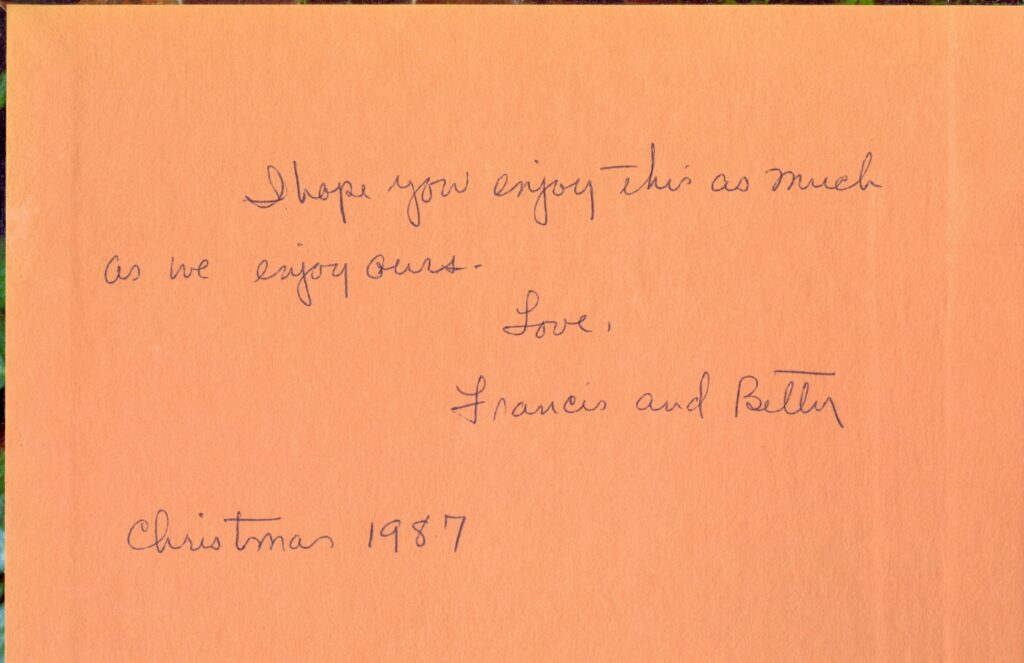
My grandfather died unexpectedly in 1950 and my grandmother never remarried. By the time I came along in the 60s, it was already firmly established that my grandmother and one of her sisters, my Great Aunt Margaret, were living together and they were almost like an old married couple until Aunt Margaret’s death in the late 1990s. A cookbook for two was a natural addition to their collection since most of their meals were meals for two.
This is one of dozens (if not hundreds) of cookbooks published over the decades by Southern Living. According to the Wikipedia entry, “Southern Living is a lifestyle magazine aimed at readers in the Southern United States featuring recipes, house plans, garden plans, and information about Southern culture and travel. It is published by Birmingham, Alabama-based Southern Progress Corporation, a unit of Meredith Corporation. The magazine was started in 1966 by The Progressive Farmer Company, the publisher of Progressive Farmer magazine. In 1980, the company changed its name to Southern Progress Corporation to reflect its increasingly diverse business, and in 1985, it was purchased by Time, Inc. for $498 million.”
One of the major topics in Southern Living is food, and since 1979, the magazine has published a popular Annual Recipes book each year. In addition, they have published specialty cookbooks, including this one by Audrey P. Stehle.
The author provides a couple of excellent chapters with handy tips on cooking for two. The “Creative Cooking for Two” chapter offers suggestions on grocery shopping, food storage, and how to book larger quantities of certain items which can them be repurposed as part of other recipes. In the “Double-Batch Cooking” chapter she discusses how to double recipes and then how to store the leftovers for future meals.
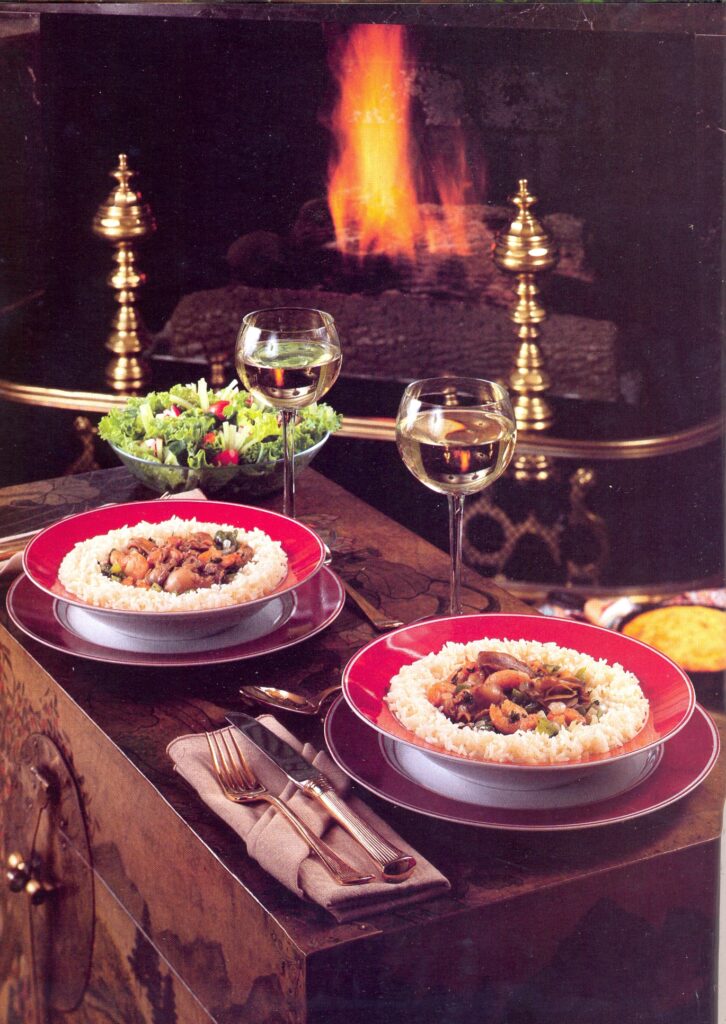
The first third of the book contains a series of 55 menus for full, multi-course meals for two. These are arranged thematically (Breakfast, Brunch, Take-Out Lunch, Special Occasions, Ethnic Cooking, etc.). Each one contains full meals including beverage pairing suggestions (often wine). The wine pairing suggestions are all California-based wines, but the author does suggest what style of wine would be best in case the cook prefers Old World vintages.
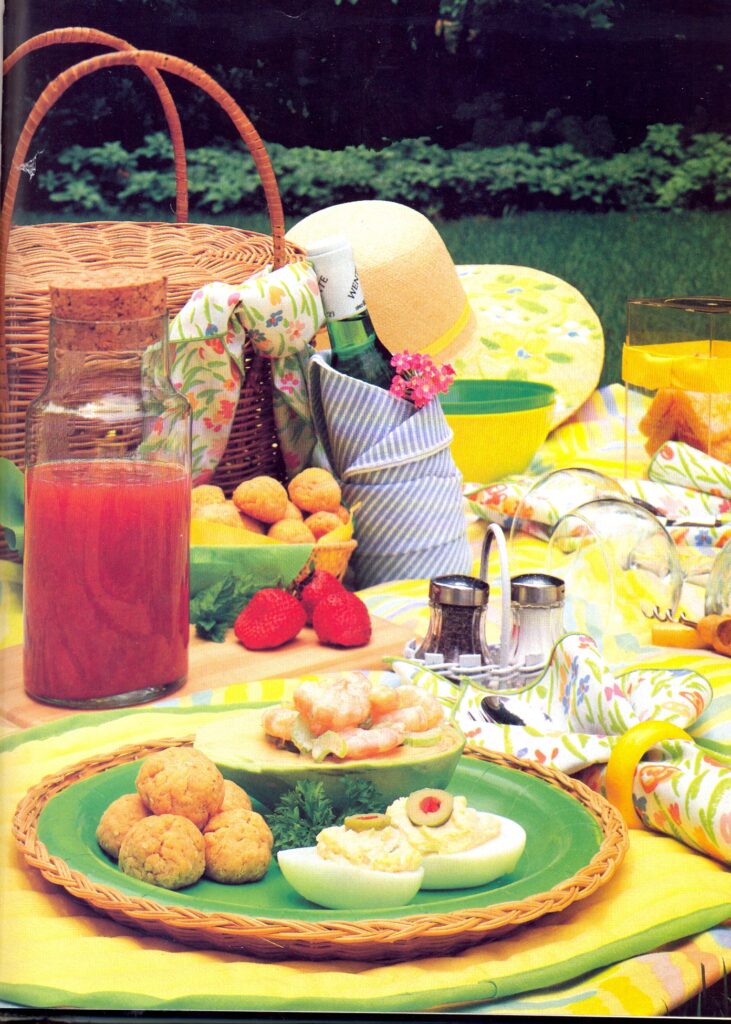
The one odd moment in the first third of the book is a chapter titled “All-Occasion Entertaining.” This section contains full menu suggestions for larger gatherings like New Year’s Day Buffet, Wine Pairing Party, etc. In general, the recipes are designed to feed as many as 20 – 30 guests. What this is doing in a cookbook titled Cookbook for Two is a mystery to me. Still, some of the buffet meal options are intriguing and a few of the recipes could be adapted down for fewer portions.
From page 141 to page 253, we finally get into the sections with individual recipes for two. This portion of the cookbook is divided into more traditional cookbook sections: Appetizers, Desserts, Vegetables/Side Dishes, Poultry, Meat, Seafood, etc. Nearly everything is simple and straightforward in ingredients and preparation.
Overall, I recommend this cookbook for anyone who wants simple, uncomplicated meals for one or two people. None of the recipes make me think, “Wow! That’s spectacular and unusual and I must try it.” Rather, most of them make me think, “Nice. That’s easy and sounds pretty tasty!” For me, this will be a utilitarian cookbook that I can come back to for inspiration when I need something different to get me out of the occasional cooking rut that I tend to fall into from time to time.
For the more visual of you, here’s a link to my YouTube video review of Southern Living Cookbook for Two. You can find a hint to the randomly-generated page and the recipe I am going to prepare at about 6:30 into the video:
I’ll be back soon with my cooking demo!
Epicuriously Yours,
Tommy
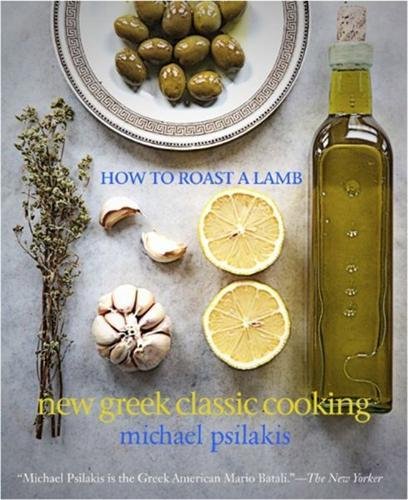 As you may recall from my last post, when I used the random number generator to pick a page in How to Roast a Lamb by Michael Psilakis, I got page 90 and a recipe for Lentil Soup. Overall, this was an easy preparation, not particularly daunting or long. The results were superb (if I do say so myself). The video review is at the bottom of this post, but first I wanted to say a bit about the wine pairing dilemma I faced with this recipe.
As you may recall from my last post, when I used the random number generator to pick a page in How to Roast a Lamb by Michael Psilakis, I got page 90 and a recipe for Lentil Soup. Overall, this was an easy preparation, not particularly daunting or long. The results were superb (if I do say so myself). The video review is at the bottom of this post, but first I wanted to say a bit about the wine pairing dilemma I faced with this recipe.
As I began to consider possible wine pairings with the Lentil Soup, I was stumped. The velvety mouthfeel and savory/umami of the soup, combined with the smoke from the ham hocks and bacon, were a puzzling combination for me to pair. Luckily, I have friends who are wine experts so I contacted by good friend Cindy Rynning. She has a website called Grape Experiences and has been one of my primary “go to” friends over the years when I need excellent wine pairing suggestions. She also has an impressive list of credentials!
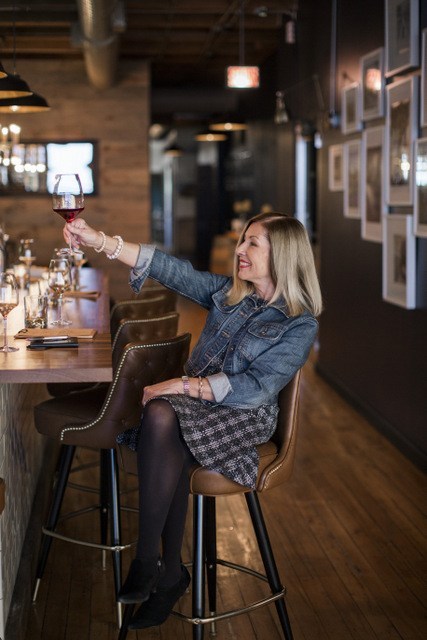 Cindy has completed the Wine and Spirit Education Trust Level 3 class and passed the exam allowing her to hold the WSET Level 3 Advanced Certificate with Merit. She was listed as one of Exel Wines’ Top 100 Most Influential Wine Bloggers of 2015 and received the awards, Best Wine Blog 2016 – United States, Best Wine Blog 2017 – United States, and Best Wine Blog 2018 – United States from Lux Life International Magazine. In both 2017 and 2018, one of her articles was a Finalist in the Millesima Blog Awards in the Wine Travel category. An email in January 2018 informed her that Grape Experiences was awarded Best Wine Blog 2017 by Drizly. Recently, she was ranked #9 in Feedspot’s ‘Best 100 Wine Blogs, Websites and Newsletters to Follow’ in 2019 and in October and November 2018, she was featured on Good Day Chicago on Fox 32.
Cindy has completed the Wine and Spirit Education Trust Level 3 class and passed the exam allowing her to hold the WSET Level 3 Advanced Certificate with Merit. She was listed as one of Exel Wines’ Top 100 Most Influential Wine Bloggers of 2015 and received the awards, Best Wine Blog 2016 – United States, Best Wine Blog 2017 – United States, and Best Wine Blog 2018 – United States from Lux Life International Magazine. In both 2017 and 2018, one of her articles was a Finalist in the Millesima Blog Awards in the Wine Travel category. An email in January 2018 informed her that Grape Experiences was awarded Best Wine Blog 2017 by Drizly. Recently, she was ranked #9 in Feedspot’s ‘Best 100 Wine Blogs, Websites and Newsletters to Follow’ in 2019 and in October and November 2018, she was featured on Good Day Chicago on Fox 32.
(Cindy Rynning (photo above) – Photo Credit: Rebecca Peplinski – Location: Winestyr Chicago Lounge )
For the Lentil Soup recipe, Cindy came up with several stellar wine pairing recommendations. I am listing all of them here, including her notes about each and why she picked them for this particular pairing:
In the end, I opted for the most unusual (to me) of all the pairing suggestions – the Ca’ de’ Medici Lambrusco Rosso. Believe me, this is not that horrific stuff that people were quaffing in the 1970s. I won’t mention any brand names here (to avoid a lawsuit) but if you think of the phrase “On ice, so nice” you will know what sort of beverage I am talking about. In reality, Lambrusco has a long and solid history in Italy and if you are lucky enough to sample it there, you will find it to be one of the most versatile and fascinating of the frizzante wines produced in Italy.
Since so many people have old prejudices about Lambrusco, however, I decided to give it a try here in the hope that (1) it would be a great pairing and (2) people might get over their prejudice and go buy a bottle or two to try.
The results were just what I had hoped. The slight sparkle of the wine was a surprising and welcome sensation when put up against the smooth, umami mouthfeel of the soup. The bright fruit and slight sweetness of the wine helped to balance and round out the intense savory, salty, and umami elements of the soup – and Cindy was correct in her assessment of the beautiful interplay between smoky bacon/ham and the wine.
Clearly, Cindy knows her wine! Be sure to check out her website: Grape Experiences.
Here’s the full YouTube video presentation of me cooking (and eating) the Lentil Soup.
Stay tuned for a new cookbook review soon!
Epicuriously Yours,
Tommy
The next installment of my cookbook challenge is not a vintage cookbook. This time, I focus on How to Roast a Lamb: New Greek Classic Cooking by Michael Psilakis, published in 2009.
“Life, love, and learning; food, family, and friends. These are the things that I hope to share, from my table to yours. Like the ingredients of each of the recipes in this book, to me, they are intertwined – one cannot exist without the others.”
Those words from page 13 of How to Roast a Lamb: New Greek Classic Cooking provide the essence of Michael Psilakis’ philosophy of food and the core of his cookbook. But this is far more than just a cookbook. It’s more of a celebration of the author’s Greek heritage and a love letter to his parents who instilled in him a lifelong passion for sharing the joys of food with others.
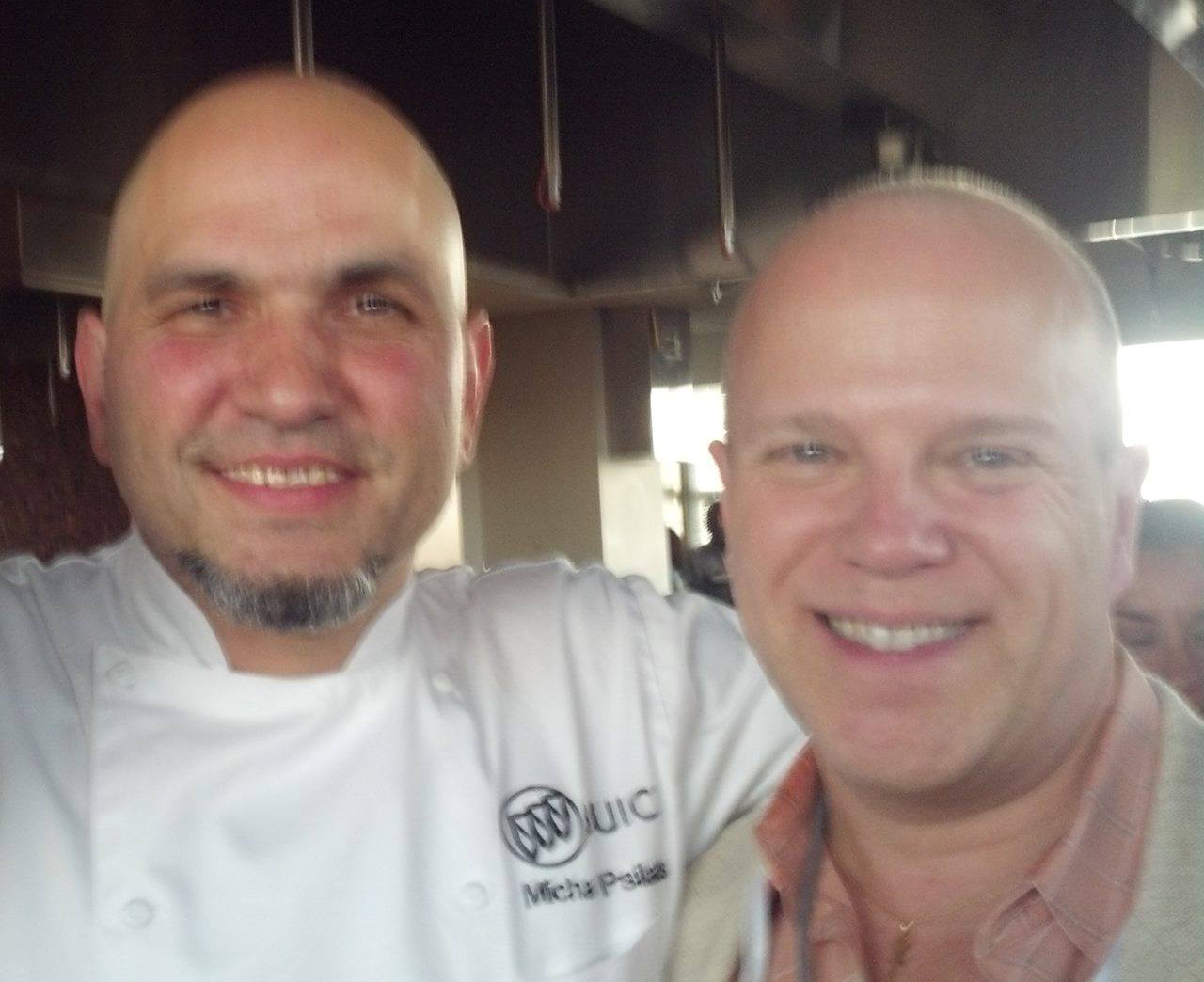 I met Michael Psilakis in the spring of 2010 when I was covering an event at the National Restaurant Association show in Chicago. I attended a cooking demo and as a gift received an autographed copy of How to Roast a Lamb which had been published just a year before in 2009. I remember thinking that it was a lovely, “coffee table” type of book with a gorgeous cover and beautiful photos. I promptly put it on my bookshelf and, quite frankly, forgot all about it until it popped up as the third installment of my current cookbook challenge.
I met Michael Psilakis in the spring of 2010 when I was covering an event at the National Restaurant Association show in Chicago. I attended a cooking demo and as a gift received an autographed copy of How to Roast a Lamb which had been published just a year before in 2009. I remember thinking that it was a lovely, “coffee table” type of book with a gorgeous cover and beautiful photos. I promptly put it on my bookshelf and, quite frankly, forgot all about it until it popped up as the third installment of my current cookbook challenge.
In 2009 when he published this cookbook, Psilakis had already achieved some of the culinary world’s highest honors. At that time, he was taking the New York restaurant scene by storm with his lauded restaurant Anthos and with his interpretation of a traditional Greek tavern, Kefi. Over the past decade, he has continued to elevate Greek cooking in the culinary world and now runs a restaurant group including two locations of MP Taverna as well as Kefi.
Little, Brown published How to Roast a Lamb in 2009 and it went on to win a number of awards. They then published his second cookbook Live to Eat: Cooking the Mediterranean Way in 2017. Both cookbooks focus not only on food, but on the stories behind the food.
“Food is our most elemental and basic need. Like the air we breathe, we need it to survive. And yet for me, and so many others, food is also a vehicle for communication.”
That quote on page 224 explains the power of this cookbook – the honest, sincere, and complex stories that stand behind his passion for cooking.
Each chapter opens with a story explaining some aspect of Psilakis’ childhood and how food was the center of his family experience. Each chapter then follows with recipes that connect with the beautiful stories he tells about his life growing up in a tightly-knit, traditional Greek family. The writing is sincere and emotional. I will fully admit to being hyper-emotional, and I teared up more than once reading some of the more intimate stories and feeling the depth of his love and respect for his parents. I found myself frequently thinking back on my own childhood and wishing I could go back and express more clearly to my parents just how much their love and support meant to me. Psilakis had the good fortune to be able to share those things before his father passed in 2007, even if he was not able to share this cookbook.
As for the recipes, they first appeared a bit daunting to me as I paged through the book. Once I started to read more closely, however, I realized that very few of them are beyond my own skill sets. Psilakis explains the processes of preparation clearly and succinctly, often suggesting substitutions and additions that can make dishes more versatile.
The only exceptions to the “relatively simple to prepare” recipes are the chapters Big Party Cooking and Anthos – The New World. The first of those chapters focuses on cooking for huge numbers of people and the recipes are vast and complex. You know you are in trouble when the first recipe starts with the instruction, “Decapitate the lamb.”
The other chapter contains some of his most celebrated dishes from the elevated restaurant Anthos. He warns readers that those recipes are complicated and require great skill and often equipment that is rarely found in a standard home kitchen. Still, he suggests that readers start with other recipes and then try out at least one of the Anthos dishes as a challenge.
 At the end of the book, Psilakis offers a two-page summary that groups recipes by type. Since the book is put together by theme – summer cooking, seafood, game, etc. – each chapter has appetizers, salads, soups, and main courses. This two-page summary helps to group things together so that you can easily find all of the salads or soups or whatever without having to page through the entire book.
At the end of the book, Psilakis offers a two-page summary that groups recipes by type. Since the book is put together by theme – summer cooking, seafood, game, etc. – each chapter has appetizers, salads, soups, and main courses. This two-page summary helps to group things together so that you can easily find all of the salads or soups or whatever without having to page through the entire book.
One of my favorite portions of the book is the final chapter, The Aegean Pantry. Here is where Psilakis offers recipes for many of the sauces, confits, and dressings that are integral to so many recipes throughout the cookbook.
After having this cookbook sit on my shelf for nearly nine years, I regret not having read it earlier! Some of the recipes are my favorites when dining at Greek restaurants, and now I have the recipes to make them at home.
You will find my video review below, including the (in)famous random number generation portion that will reveal just what recipe I will be challenged to prepare!
My next post will be my assessment of my cooking challenge!
Epicuriously Yours,
Tommy
PS You can get a sneak preview of the randomly chosen recipe at 9:50 into the video.
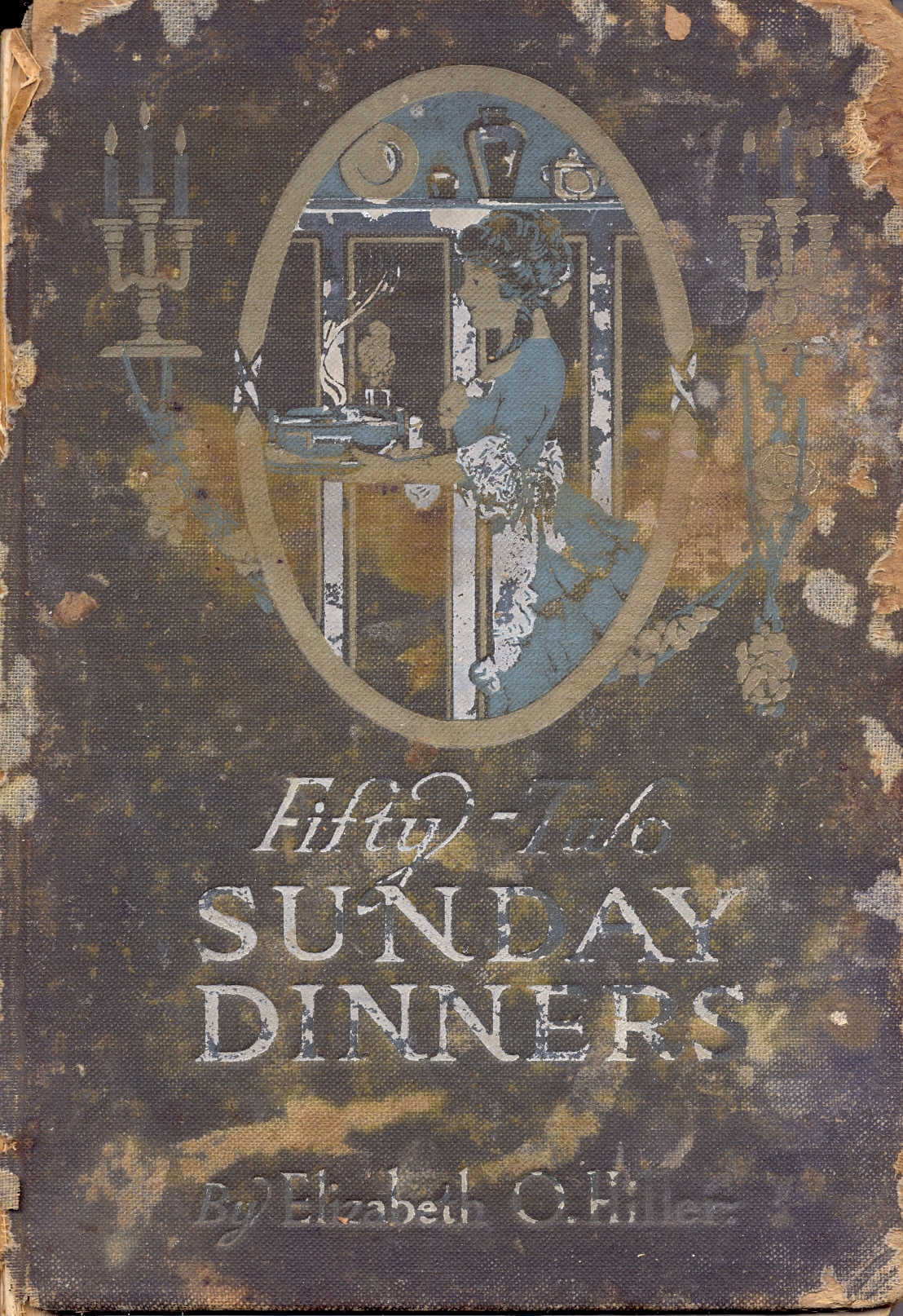 Welcome back to my cookbook challenge.
Welcome back to my cookbook challenge.
As promised in my prior blog post, I am posting the video of my attempt to prepare Crab Meat in Timbales from page 15 of Fifty-Two Sunday Dinners by Elizabeth O. Hiller.
As you will see, I clearly need to practice my “Swedish Timbale” technique.
I paired the recipe with one of my favorite sparkling wines, a 2016 W. Donaldson Sonoma Rosé available from my favorite wine club – Naked Wines. Wayne Donaldson is the former head winemaker for Domaine Chandon, so you can be assured that his sparkling wine is superb.
If you’re interested in picking up a set of the timbale irons I used in this demo, you can find them on Amazon.
Until next time, I am as always . . .
Epicuriously Yours,
Tommy
“To the modern wide-awake, twentieth-century woman, efficiency in household matters is quite as much a problem as efficiency in business is to the captains of industry.”
Thus begins the Introduction to Fifty-Two Sunday Dinners.
This is the second installment of my cookbook challenge and the oldest of all the vintage cookbooks I inherited from my grandmother. This book is titled Fifty-Two Sunday Dinners by Elizabeth O. Hiller, published in 1913 by the N.K. Fairbank Company. At that time, the book sold for $1.00. According to the US Inflation Calculator, that equates to just under $26.00 in 2019 funds so clearly this was a cookbook aimed at a somewhat more affluent household of the time.
I am including my YouTube video review of the cookbook at the end of this post.
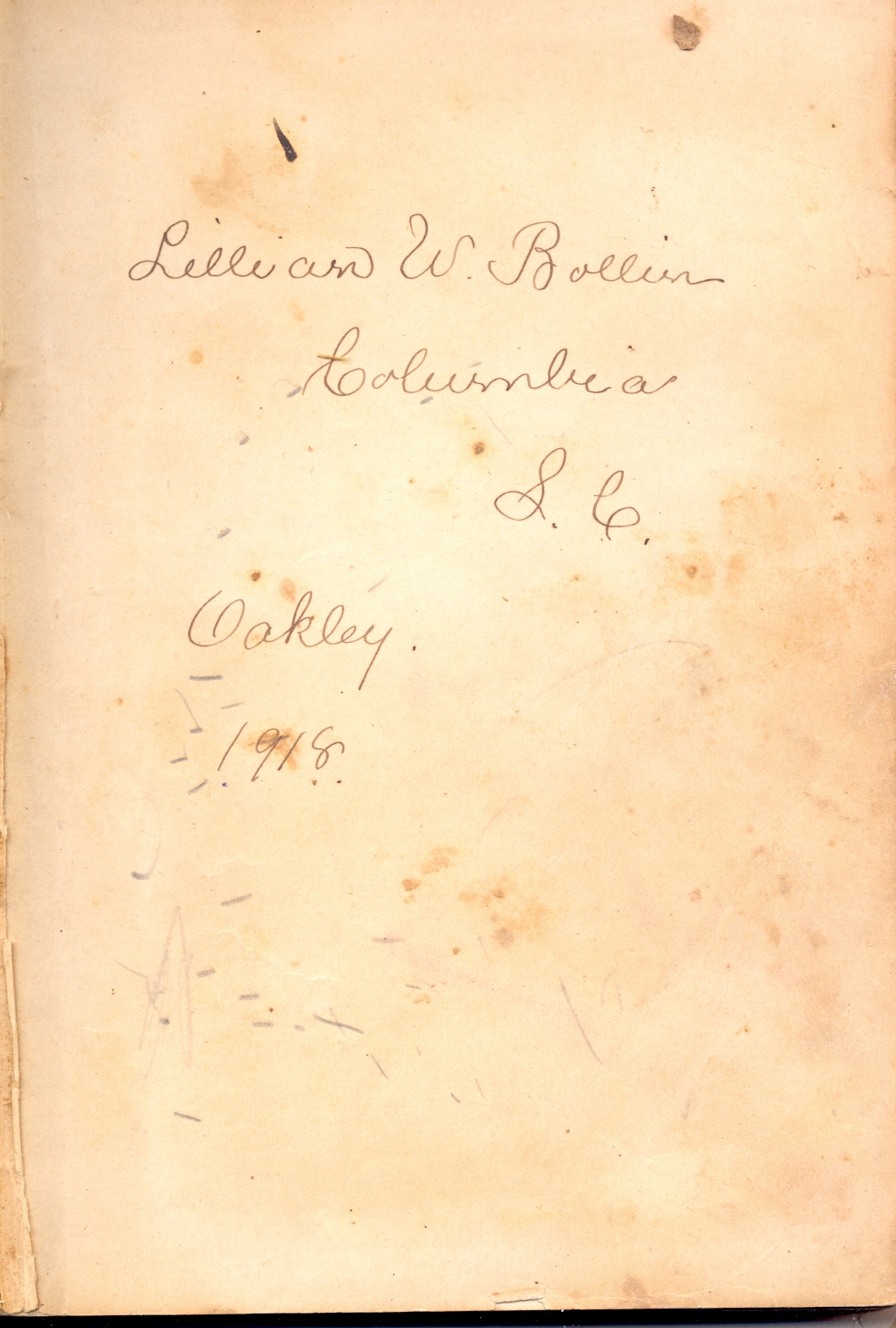 My copy of this cookbook is falling to pieces. Both the front and back covers have detached from the book, and it has clearly seen some use. The book is inscribed by my great grandmother, Lillian W. Bollin and dated 1918. She was born in 1863 in Richmond, VA, so at this point would have been in her mid-fifties and living in Columbia, SC.
My copy of this cookbook is falling to pieces. Both the front and back covers have detached from the book, and it has clearly seen some use. The book is inscribed by my great grandmother, Lillian W. Bollin and dated 1918. She was born in 1863 in Richmond, VA, so at this point would have been in her mid-fifties and living in Columbia, SC.
The author, Elizabeth O. Hiller, was a prolific cookbook author and well-known culinary figure. Among other things, she wrote recipes for the Chicago Tribune and early in her career lost out to Fanny Farmer to be a columnist for Women’s Home Journal. If she has won, I imagine we would know more about her. If you look up her list of publications, however, you will see that she was a busy writer. You can get more information about her at her Wikipedia bio.
Fifty-Two Sunday Dinners is a fascinating cookbook for a number of reasons. First, the recipes are complex and use expensive ingredients – indicating again that the market was a more affluent household. Second, the structure of the cookbook is not just a collection of recipes, rather it is a collection of 52 full meal plans, each geared towards a different Sunday of the year. Finally, it is both a cookbook and what we would call an “advertorial” for a product called Cottolene.
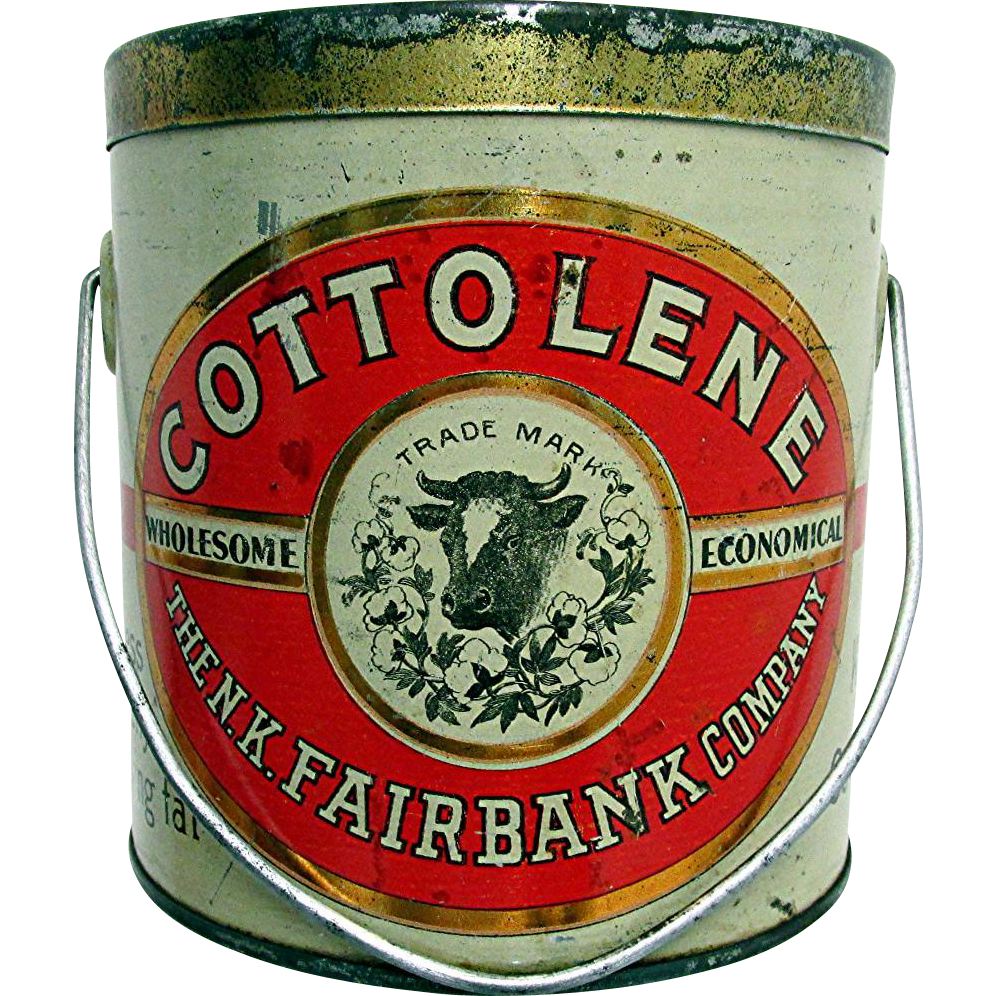 I would love to know how many readers have ever heard of Cottolene. I know that I had no clue what it was until I started to read the cookbook and then did a great deal of online research. In 1868, the N. K. Fairbank company premiered a product made from a combination of cottonseed oil and beef suet. This product, called Cottolene, was touted as a healthy alternative to lard. The product was the end result of what had previously been waste products in two major industries – cotton and meatpacking. From 1868 until 1911, Cottolene was essentially the only product of its type on the market.
I would love to know how many readers have ever heard of Cottolene. I know that I had no clue what it was until I started to read the cookbook and then did a great deal of online research. In 1868, the N. K. Fairbank company premiered a product made from a combination of cottonseed oil and beef suet. This product, called Cottolene, was touted as a healthy alternative to lard. The product was the end result of what had previously been waste products in two major industries – cotton and meatpacking. From 1868 until 1911, Cottolene was essentially the only product of its type on the market.
In 1911, however, a company called Proctor and Gamble created a product called Crisco (I bet you recognize that one). Crisco was 100% cottonseed oil. What ensued then was a competition to see which product would win over the hearts (and stomachs) of American’s housewives.
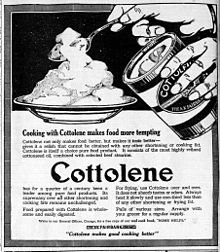 Both companies did traditional advertising, but also utilized the “advertorial” concept similar to the one from Fifty-Two Sunday Dinners. They would find a noted cook and/or recipe writer, have them compile a cookbook, then include information about the product. That information generally included testimonials from well-known cooks as well as testimonials from doctors, touting the health benefits of the product over those of lard and butter.
Both companies did traditional advertising, but also utilized the “advertorial” concept similar to the one from Fifty-Two Sunday Dinners. They would find a noted cook and/or recipe writer, have them compile a cookbook, then include information about the product. That information generally included testimonials from well-known cooks as well as testimonials from doctors, touting the health benefits of the product over those of lard and butter.
Obviously, Crisco won that PR battle because it’s still here while Cottolene has faded into the annals of culinary history.
In an online article, Alice Ross does a great job of exploring the history of both Cottolene and Crisco and what she terms the “mysterious disappearance of lard.” You can also get information about Cottolene and Crisco on their respective Wikipedia pages.
The advertising campaign for Cottolene was fascinating. I invited you to use your favorite search engine to find images of early 20th century Cottolene advertising. I think you will be entertained by what you find. I will include a few images at the end of this post as well.
According to the Introduction of the book:
The eternal feminine question is, “What shall we have for dinner to-day?”
Fifty-Two Sunday Dinners, as you see, is clearly a product of the time. In 1913, the assumption was that women stayed home to take care of the family while husbands went out and worked to support the family. If you can get past some of these types of references in the cookbook, however, you will find an extraordinarily well-crafted series of recipes. The title gives a clue as to the layout of the book. Rather than being a simple collection of recipes, the book is divided into 52 sections each containing a full menu designed for a specific Sunday of the year. The assumption is that Sunday dinners are generally more elaborate than the rest of the week.
For instance, as I am writing this review the next Sunday will be the 1st Sunday of August. In the cookbook, that menu consists of the following:
A very complete meal – and that’s one of the least complicated of the meals in the book.
The author aligns ingredients and recipes to be as seasonal as possible. In the Introduction, the publishers note:
While climatic conditions differ somewhat in various sections of the country, we have tried to approximate the general average, so that the suggestions might be as valuable to the housewife in New England as to the housewife in the West or South, or vice versa.
From the ingredient lists, it seems clear that refrigerated transport was available up to a point. Many winter recipes include oysters, which would obviously have to be shipped quickly and on ice to get to the Midwest safely. Beyond that, most of the ingredients seem to be focused on what can be found locally and seasonally. During spring and summer months, many menus include dandelion greens along with instructions how to harvest and clean them.
Overall, I found this cookbook to be one of the best I have read in a quite a long while. There are very few recipes repeated, so in the course of reading this cookbook you will find over 300 intriguing options. I also love the ‘meal planning’ aspect of this book. The idea of putting together full meal plans makes it easy to just lift a section and create a fantastic meal for six hungry people at any time. The meals are not simple to prepare, nor are they for the novice cook. Some of the techniques are time-consuming and intricate, but the results are sure to be superb.
If you’re interested in this cookbook, you don’t have to search for an actual vintage copy. I found out that the book was republished in its entirety in 1981 with the same cover art and all of the vintage Cottolene information intact! So check out Amazon for a more recent copy.
As promised in my introduction to the cookbook challenge, I used a random number generator to pick a page from the cookbook. The page chosen was page 15, containing the following recipes:
My next post will be a video of my cooking one (or more) of the recipes from that page. Until then, please enjoy the video review below.
Epicuriously Yours,
Tommy
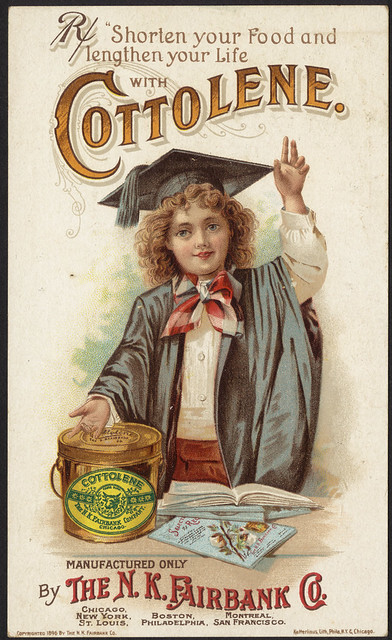
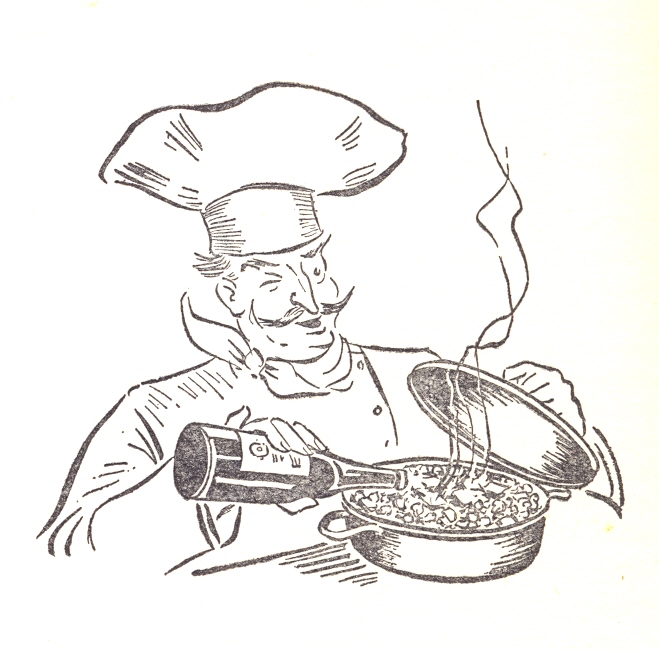 Greetings! If you have been following my recent posts, you know that I have promised to prepare a randomly-chosen recipe from each cookbook I review.
Greetings! If you have been following my recent posts, you know that I have promised to prepare a randomly-chosen recipe from each cookbook I review.
The first of my cookbook reviews was Casserole Magic by Lousene Rousseau Brunner, published in 1953. When I used a random number generator, the winning recipe was Tuna-Fish with Noodles (page 89).
Enjoy the video recap of my cooking experience!

As promised in the video, follow this link for more information about the wine I mention:
This is my favorite winery in Sonoma, CA so please be sure to visit on your next trip there!
Please subscribe to my YouTube channel and be sure to sign up for the mailing list to receive updates about this blog. My next cookbook review will be coming soon!
Epicuriously Yours,
Tommy
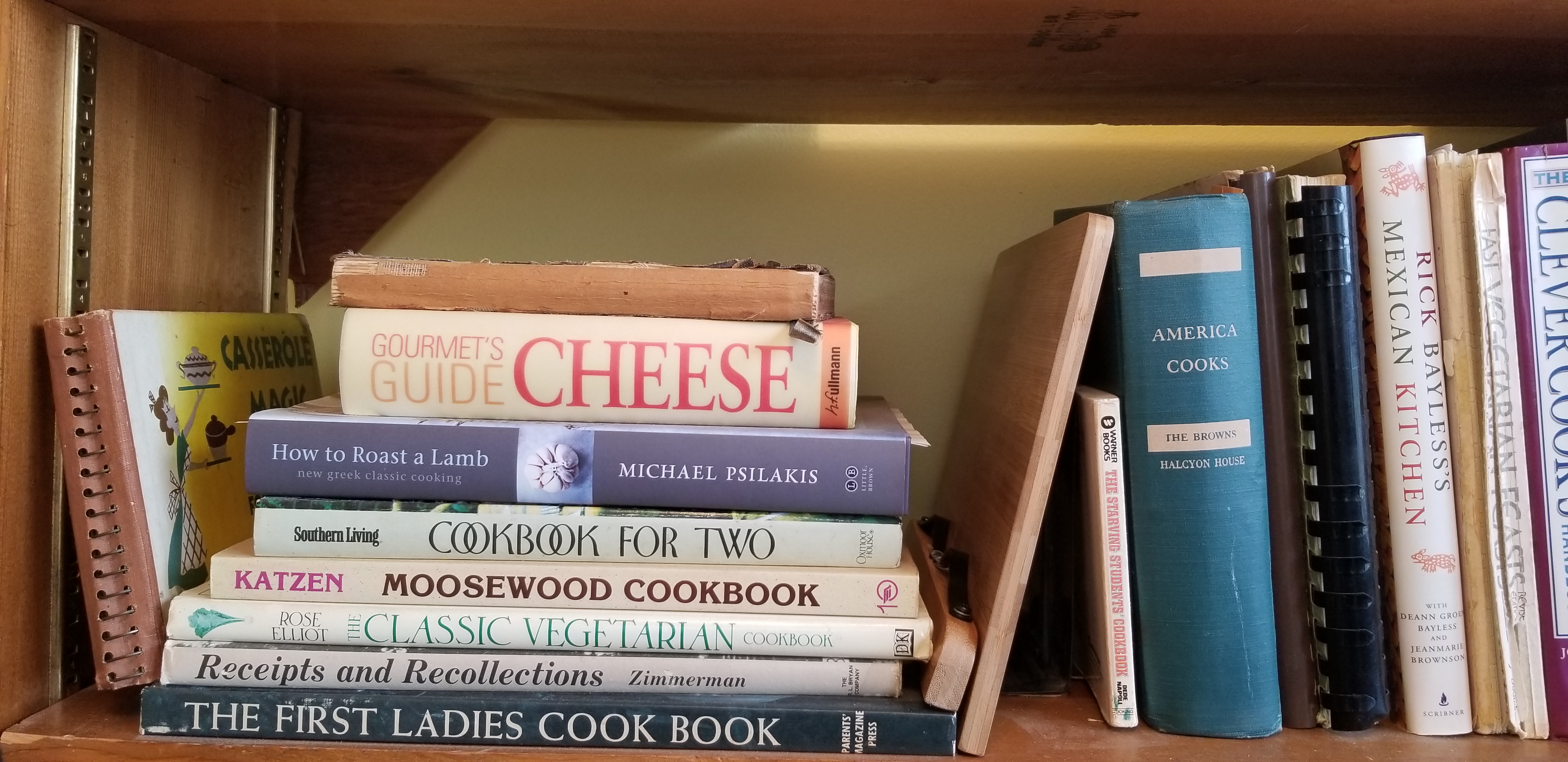 Welcome to the first installment of my “Cookbook Challenge.” As you may recall from an earlier post, I have decided to work my way from one end of my cookbook shelf to the other – one book at a time. For each one I will read, review, pick a random page (or pages), then prepare the recipe (or recipes).
Welcome to the first installment of my “Cookbook Challenge.” As you may recall from an earlier post, I have decided to work my way from one end of my cookbook shelf to the other – one book at a time. For each one I will read, review, pick a random page (or pages), then prepare the recipe (or recipes).
For those who prefer video to reading, I am including my YouTube video review of this first cookbook at the end of this post. Otherwise, read on!
The first cookbook, all the way to the left of the bookshelf, is one of many that I inherited from my grandmother. She lived from 1898 – 2001 and although her collection of cookbooks was not extensive, it spanned over 80 years of cooking. Many of the cookbooks we will explore during this challenge can rightfully be termed “vintage.” This first one is a perfect example.
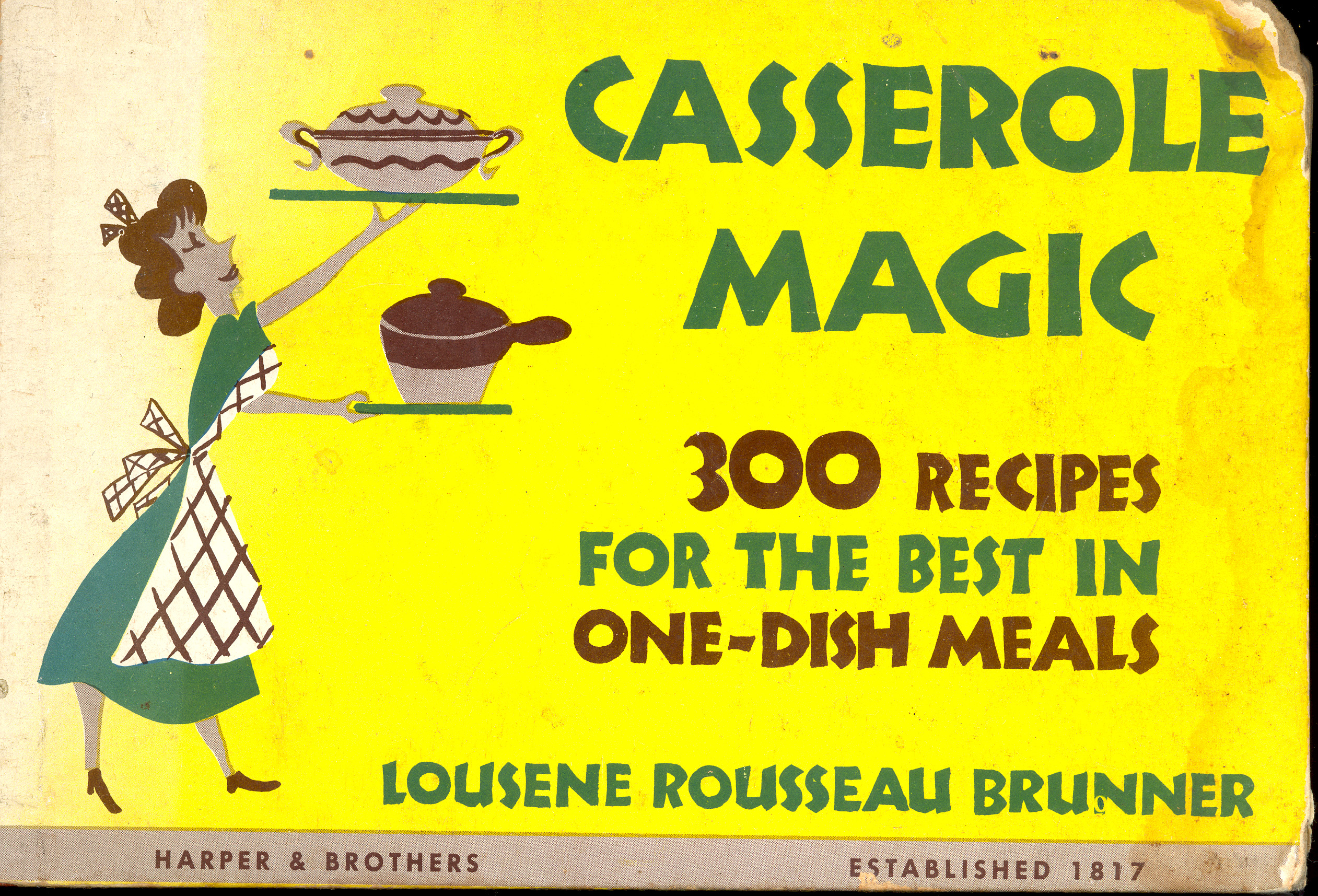 We begin with Casserole Magic: 300 Recipes for the Best in One-Dish Meals by Lousene Rousseau Brunner, published in 1953 by Harper & Brothers Publishers in New York. The book contains charming line drawings by Stephen J. Voorhies. All of the line drawings used in this post are his work from the book.
We begin with Casserole Magic: 300 Recipes for the Best in One-Dish Meals by Lousene Rousseau Brunner, published in 1953 by Harper & Brothers Publishers in New York. The book contains charming line drawings by Stephen J. Voorhies. All of the line drawings used in this post are his work from the book.
On the rear cover the price is marked as $3.00. According to my internet research, that equates to about $28.00 today. Not an inexpensive cookbook by any means.
I searched for quite a while online to see if I could find any information about the author, Lousene Rousseau Brunner. Sadly, nothing concrete seems to exist except a record of several other cookbooks. According to a combination of information from Amazon and Goodreads, she was also the author of Magic with Leftovers (1955), Casserole Treasury (1964), The Summer Cookbook (1966), New Casserole Treasury (1971) and New Casserole Treasury in Colour (1977). Clearly, she has a theme in her cooking passions.
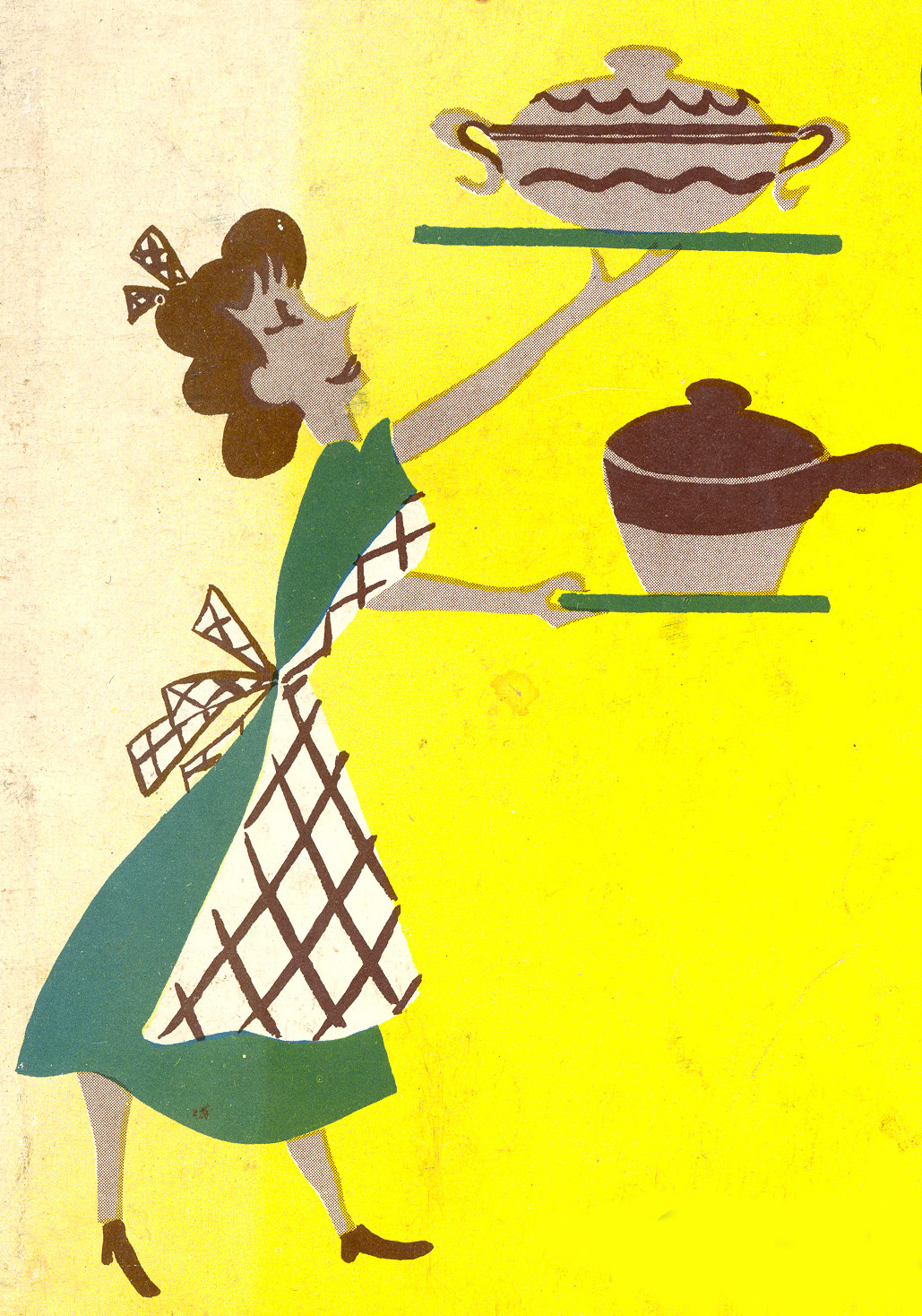 When I first picked up this cookbook, I was drawn to the stereotypical drawing on the cover – a woman in a crinolined dress, well coiffured, and wearing a decorative apron while serving casseroles. My first assumption was that this would be one of those old-school books extolling the virtues of things like “cream of mushroom soup” and “jello.” I felt suitably chastised when I sat down and began to read. This is a serious cookbook by a very knowledgeable and serious cook.
When I first picked up this cookbook, I was drawn to the stereotypical drawing on the cover – a woman in a crinolined dress, well coiffured, and wearing a decorative apron while serving casseroles. My first assumption was that this would be one of those old-school books extolling the virtues of things like “cream of mushroom soup” and “jello.” I felt suitably chastised when I sat down and began to read. This is a serious cookbook by a very knowledgeable and serious cook.
Brunner sets the stage by defining her purpose on page vii of the Foreword:
One simple principle has governed the preparation of this book: there is no excuse for dull or monotonous food. The hundreds of recipes collected here suggest a great variety of delectable dishes. Many of them are inexpensive – or perhaps it would be more accurate these days to say that they use cheaper foods. They provide many ways of using leftover food to create new dishes.
As I delved deeper into the book, I began to see that L.R. Brunner and I share a great deal when it comes to food. Later on that same page, she notes:
It is no part of the purpose of this book merely to shorten the process of food preparation. Prepared mixes and other short cuts have their place, but they contribute little to making either cooking or eating a joy, and that is what it should be.
A bit later, on page 2, she extols the virtues of cooking with wine:
Wine is a vital ingredient of some of the most appetizing casserole dishes, and its use adds distinction to all kinds of otherwise “plain” dishes. (Of course the alcohol in it evaporates almost at once, and only the flavor remains.) For superb results you do not need the fine table wines. Good domestic wines are perfect for the purpose, but they must be good. You can’t make a good dish with poor wine.
Clearly, she and I would have gotten along just fine.
In some ways, Casserole Magic is still a product if its times. Brunner uses feminine pronouns at all times when talking about cooks. She often refers to them as “housewives” and “hostesses.” One of my favorite 1950-centric quotes is this one from page ix of the Foreword:
The advantages of casserole cooking are almost too obvious to recount. Foremost among them, probably, is the act that most casserole dishes can be prepared some time in advance of mealtime, sometimes a whole day in advance. This leaves the housewife free for other last-minute chores – table setting, putting the children to bed, greeting guests calmly, or having a quiet cocktail with her husband – while the casserole cooks.
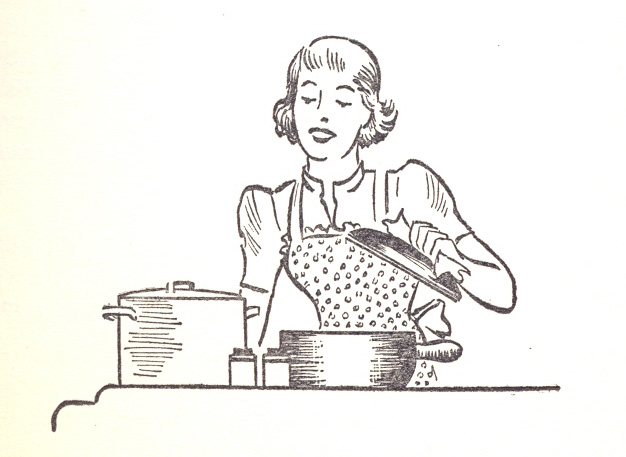 I have visions of June Cleaver meeting Ward at the door with a dry martini – attired in a crinolined dress, pristine apron, pearls, and high heels.
I have visions of June Cleaver meeting Ward at the door with a dry martini – attired in a crinolined dress, pristine apron, pearls, and high heels.
Once you get past some of the stereotypical moments, however, you then dive into an excellent cookbook. Brunner includes sections about the history of casseroles, the use of herbs in cooking, how to make herb butters, and a variety of inventive ways to marinate meats. Although she does tout the glories of a fantastic “new” product called “monosodium glutamate” I can forgive that when I look at the rest of this superb cookbook.
One of the things that fascinates me about vintage cookbooks is that inclusion of products and/or techniques that give an insight into the norms of the day. For instance, Brunner includes bacon fat as an ingredient in at least half of the recipes. The assumption, then, is that housewives in the early 1950s all had a ready supply of bacon fat in the kitchen. Actually, I remember this from my own childhood in the 1960s and early 1970s. My mother had a metal container on the stove which was a strainer for bacon fat.
Of equal interest are those things that Brunner writes about as being “new” or “innovative.” Like the idea of MSG being a fantastic new product, she also writes extensively about cooking with herbs as a new and daring innovation. The inside covers of the book contain charts of common herbs and how they should be used. In a section of the Foreword, she spends two full pages discussing the joys of using herbs in cooking, herbs that are not necessarily easy to find. She notes on page x of the Foreword:
American cooks are slowly becoming aware of the extent to which the skillful use of herbs can bring out food flavors. Dried bottled herbs in great variety are now carried by most “fancy” grocers and even by some chain stores.
If you do find a copy of Casserole Magic, you will probably be as intrigued as I was by the more inclusive definition of the word “casserole” used by the author. We generally think of casseroles as oblong and sometimes round Pyrex dishes that are used in the oven. For Brunner, the concept of casserole includes those cooking containers that are used for one-pot meals. Many of the recipes in this book are crafted to be prepared on the stovetop in things like the French marmite or a cast-iron Dutch oven. Many recipes involve cooking on the stovetop, then transferring the entire pot to the oven.
After the initial Foreword, Casserole Magic is divided into seven broad sections:
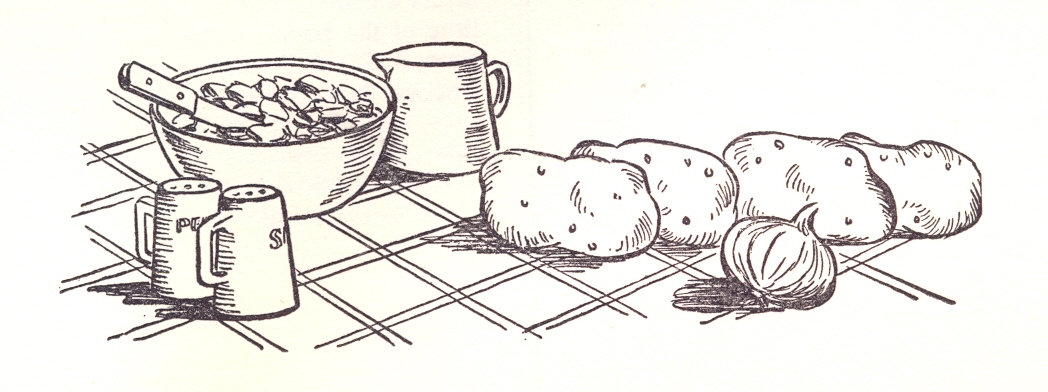 For all of the meat-centric sections, each recipe includes the author’s suggestions of sides to serve with the main course recipe. For instance, in the recipe for Flemish Beef Stew (page 13) she ends by saying, “Serve with buttered noodles or spaghetti, hot garlic bread, and a tossed salad of romaine or chicory.” Each recipe in these sections has similar (and often intriguing) suggestions.
For all of the meat-centric sections, each recipe includes the author’s suggestions of sides to serve with the main course recipe. For instance, in the recipe for Flemish Beef Stew (page 13) she ends by saying, “Serve with buttered noodles or spaghetti, hot garlic bread, and a tossed salad of romaine or chicory.” Each recipe in these sections has similar (and often intriguing) suggestions.
The section on “One-Dish Meals” contains those dishes that the author deems hearty enough to serve as a meal alone with the possible inclusion of garlic bread (for which she provides a tasty recipe on page 103). Here we find things like Lasagna, Spanish Olla of Beef, Chicken Curry, Kentucky Burgoo, Irish Stew, and such.
The section on cooking with vegetables starts on page 129 with one of the most fascinating passages in the book. She warns cooks not to boil vegetables in a lot of water, but to cook in “an absolute minimum of boiling water (except for cabbage), barely long enough to become tender.” The fascinating piece is this tidbit of advice, something I have never before seen or heard:
A new method of waterless cooking which can be done in any kettle produces vegetables that are a miracle of tenderness. The method is simple but takes a little longer than boiling. In any kettle at all melt one tablespoon of margarine or butter for every two portions of vegetables . . . Put vegetables in the kettle, add about one-half teaspoon of salt and a little sugar for two portions, stir well to coat with fat and seasoning, lay over the top a single layer of lettuce leaves, cover tightly, and cook without stirring, over very low heat, about twenty minutes.
What? I can only assume this is a way of steaming vegetables – so I wonder if the concept of a steamer basket was not prevalent in 1953? Any cooks who would recall that era, I would love to know!
Overall, as you can tell, I loved this cookbook. I recommend grabbing one of the few rare copies left on Amazon. The tips and tricks for things like making a perfect soufflé, easy browning of meat, using inexpensive cuts of meat, using leftovers, and more are all invaluable time-savers for any cook today.
And now, the moment we have all been waiting for (at least I hope)! During my video review (available on YouTube), I used a random number generation program to point out two recipes. You can find that section of the video beginning at 17:30, revealing the two pages containing the recipes I will prepare from Casserole Magic.
 The winning recipes are: Tuna-Fish with Noodles (page 89) and Quick Cheese Soufflé (page 161).
The winning recipes are: Tuna-Fish with Noodles (page 89) and Quick Cheese Soufflé (page 161).
Tasty? I’ll know soon!
There you have it! My next post (and my next series of videos both here and on YouTube, will be my preparation of those two recipes. This could get highly entertaining!
Epicuriously Yours,
Tommy
It’s finally time to unveil a new concept for my website!
 Back in 2011 when I began “Table For One, Please” the focus was entirely on single dining at restaurants. I maintained that focus for a few years until a disastrous experience with a web hosting company resulted in the accidental deletion of all of my posts.
Back in 2011 when I began “Table For One, Please” the focus was entirely on single dining at restaurants. I maintained that focus for a few years until a disastrous experience with a web hosting company resulted in the accidental deletion of all of my posts.
Needless to say – I ditched that company and moved to a new hosting service immediately.
Luckily, I was introduced to the website Wayback Machine. Most of my information had been archived, so I was able to rebuild the site from the ground up. I plugged along fairly well for another few years, but my single dining had pulled back a great deal due to a very lucky experience. After reading my reviews, the publisher of The Local Tourist contacted me and asked me to start writing restaurant reviews for that website.
Most of my dining from that point forward involved invitations to restaurants, asking me to bring a friend and then write about the experience. With so much time and energy devoted to The Local Tourist, I allowed my own site to grow dormant.
During that period of inactivity, I neglected to see that another disastrous web hosting “accident” had once again deleted my content. At this point, I took that as a sign from some higher authority that I needed to re-think my approach to the site.
 After pondering options, I suddenly had an epiphany.
After pondering options, I suddenly had an epiphany.The concept of “table for one” encompasses far more than just dining alone at restaurants. For me, it involves that but also cooking for one at home as well as the energy of travelling alone. Once I had that epiphany, I began to brainstorm just how I could merge those concepts into the site.
One night, after enjoying a “cooking for one” experience at home and while enjoying a “cocktail for one” experience afterwards, I decided to dive down the rabbit hole of Netflix. During my random clicking, I ran across the film Julie and Julia. I had seen it years before, but decided to watch again. It’s an excellent, entertaining film – especially if you are a foodie.
The film is based on two true stories – the life of Julia Child and the book Julie and Julia: My Year of Cooking Dangerously by Julie Powell. I highly recommend both!
After the film, I went into my kitchen and pulled out my own copy of Mastering the Art of French Cooking but noticed that I had a fairly large collection of cookbooks, most of which I have never even cracked open. I don’t have the most extensive collection I know (some of my friends have entire rooms filled with cookbooks) but I counted 92 on my shelf – that’s a fairly impressive number.
Inspired by the film, I thought to myself, “What if I were to do something like Julie Powell did?”
Of course, I couldn’t duplicate the exact process. First, that would be doing something that had already been done. Second, there are no other cookbooks that are as iconic as Julia Child’s book. Finally, if I were to try to cook all the recipes, it would take several lifetimes.
I am a huge fan of the phrase, “What if . . . “ so I started asking myself that question until I finally got to a “what if” that rang as a fun and exciting proposition.
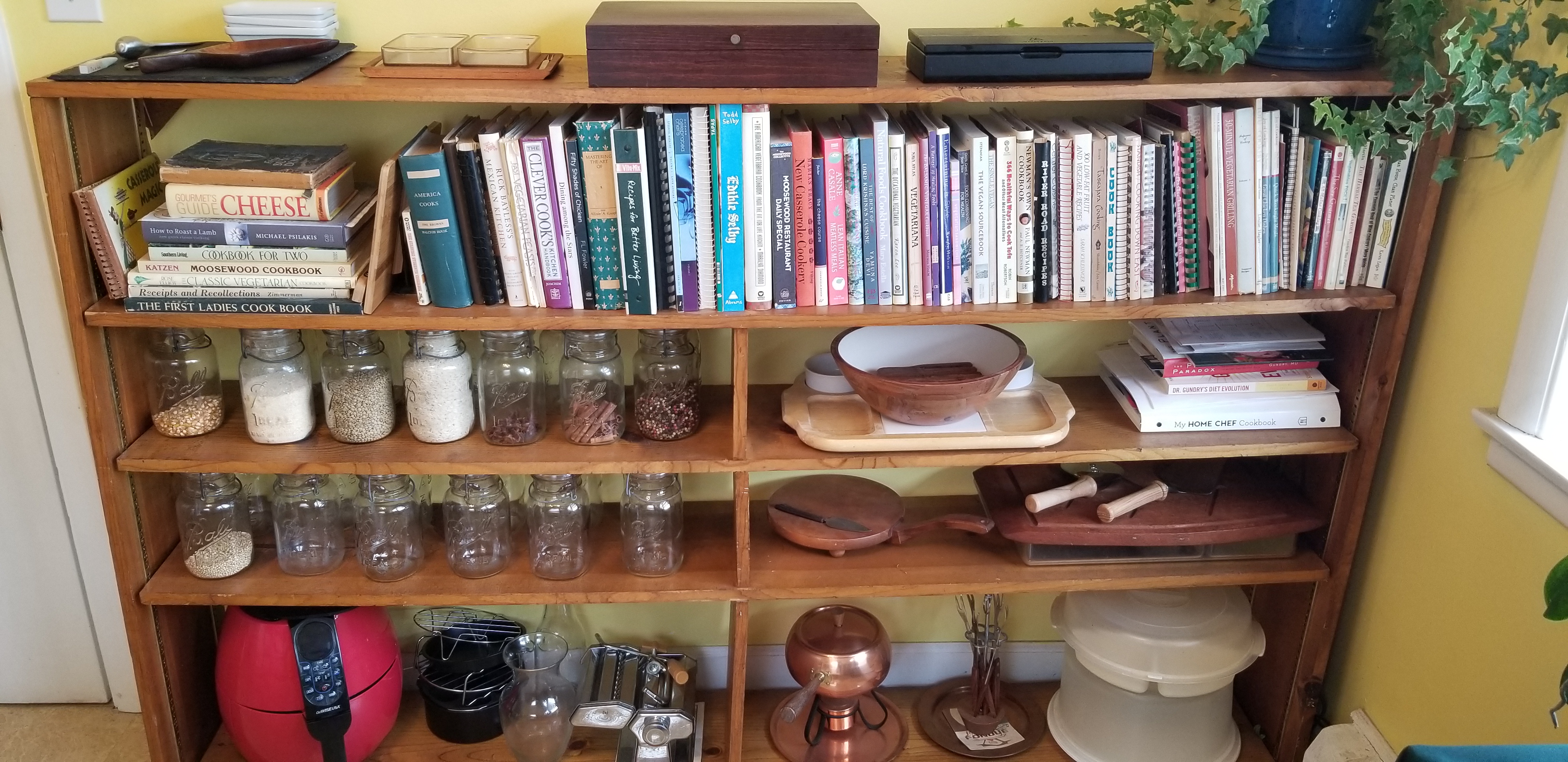 What if I were to read and review each cookbook and then cook something representative from each one, then write about it?
What if I were to read and review each cookbook and then cook something representative from each one, then write about it?The more I thought about this, the more I got excited by the idea. I will still review restaurants from time to time, and I will certainly write about my solo travel adventures when they happen, but to restart my website I have decided to engage in this recent brainchild which I am calling the Cookbook Challenge.
Here are the rules I have established for this Cookbook Challenge, and I invite everyone to keep me honest!
 I think this is going to be a blast!
I think this is going to be a blast!Keep an eye out for my next post, where I reveal the title of that first cookbook you see all the way to the left side of the shelf in the picture above – the beginning of my new Cookbook Challenge.
Epicuriously Yours,
Tommy